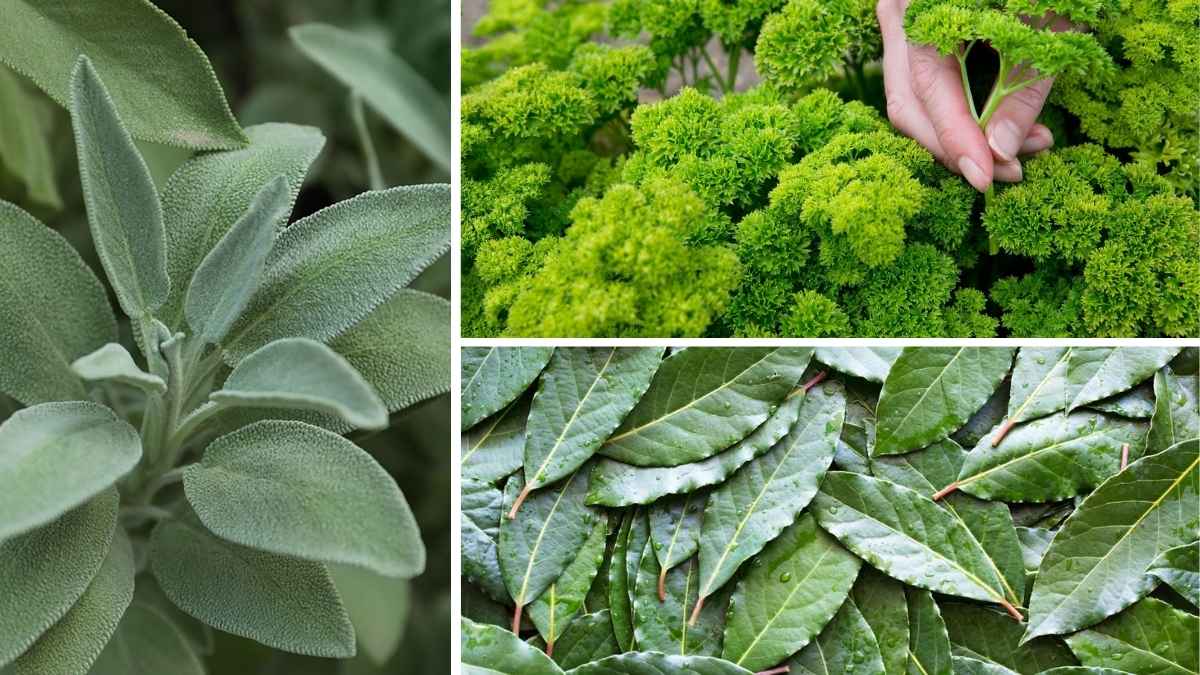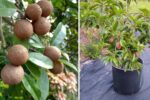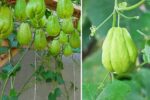Thanksgiving is the perfect time to gather around the table, enjoy delicious food, and reflect on the things we’re most grateful for. While turkey and stuffing are usually the stars of the show, it’s the herbs that really bring out the best in every dish. Whether you’re preparing a classic meal or trying something new, the herbs you choose can make all the difference in creating unforgettable flavors. Here are seven herbs that will elevate your Thanksgiving feast and how to grow them yourself.
1. Sage: The Thanksgiving Herb
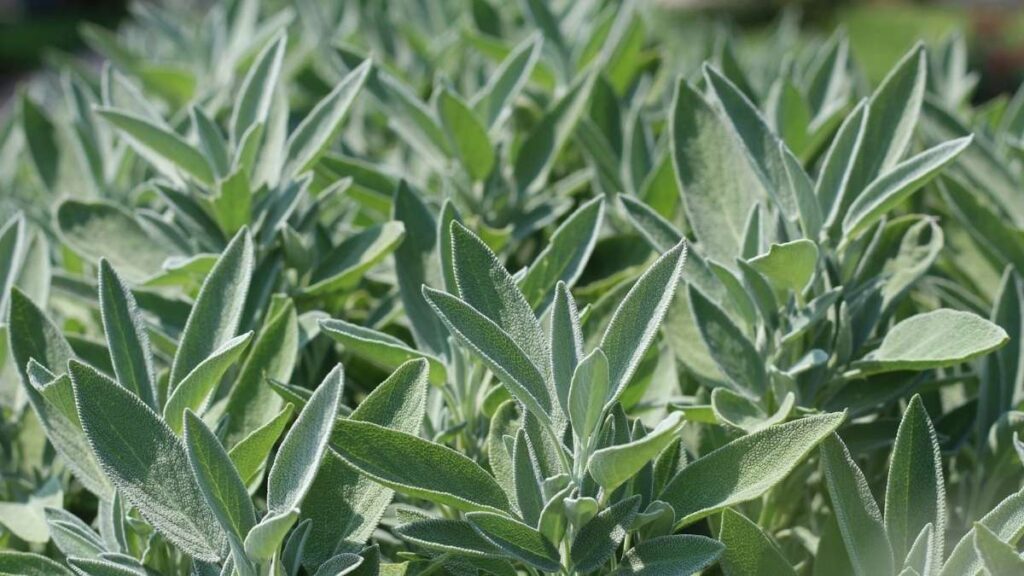
Sage is arguably the most iconic herb for Thanksgiving. Its earthy, slightly peppery flavor pairs beautifully with turkey, stuffing, and even roasted vegetables. Fresh sage offers a stronger flavor compared to dried, making it ideal for basting turkey or infusing butter. You can make a simple yet delicious sage butter to coat your turkey before roasting, giving the bird a golden, crispy skin and rich flavor.
Sage also shines in stuffing, where its robust flavor enhances the bread, onions, and other ingredients. The versatility of sage doesn’t stop there add it to mashed potatoes, roasted vegetables, or even in a turkey gravy for an extra layer of richness.
How to Grow Sage:
- Location: Full sun for at least 6 hours a day.
- Soil: Well-drained, slightly alkaline soil.
- Watering: Water sparingly; sage prefers dry conditions once established.
- Planting: Space sage plants 12–24 inches apart. It can be grown from seeds, cuttings, or young plants.
- Care: Trim back in the spring to encourage new growth, and protect from winter frost in colder regions.
2. Rosemary: Bold and Fragrant
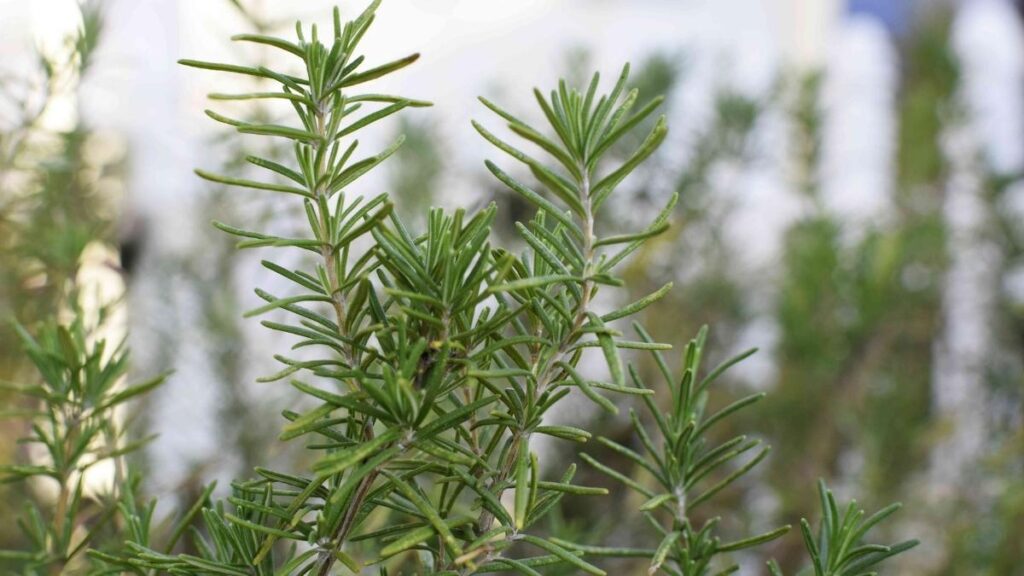
Rosemary is another herb that adds a bold, aromatic presence to Thanksgiving meals. Its pine-like aroma and slightly bitter taste are perfect for seasoning roasted meats like turkey, lamb, and even chicken. Rosemary works wonderfully when added to stuffing or roasted vegetables, giving them a savory depth of flavor. Fresh rosemary sprigs can also be used to garnish dishes, adding a touch of elegance to the table.
For a unique twist, try using rosemary in a cranberry sauce or mashed sweet potatoes. Its bold flavor balances out the sweetness, making the dish even more memorable.
How to Grow Rosemary:
- Location: Full sun, at least 6-8 hours of sunlight.
- Soil: Well-draining, slightly acidic or neutral soil.
- Watering: Water only when the soil is dry to the touch; rosemary doesn’t like to sit in wet soil.
- Planting: Grow from seeds or cuttings. Space plants 18–24 inches apart.
- Care: Prune regularly to maintain shape and remove any dead wood. Rosemary is a hardy herb but may need winter protection in colder climates.
3. Thyme: Versatile and Timeless
Thyme is a wonderfully versatile herb that can be used in almost every dish at your Thanksgiving table. Its subtle, slightly lemony flavor works perfectly in stuffing, turkey, and even vegetable dishes. Thyme adds depth to savory gravies and sauces, and its fragrance complements roasted root vegetables like carrots, parsnips, and Brussels sprouts.
Thyme can be used in both fresh and dried forms, and it’s an essential herb in Thanksgiving stuffing. Add thyme to the broth or stock to infuse the dish with flavor, or sprinkle some over your roasted vegetables for an aromatic touch.
How to Grow Thyme:
- Location: Full sun is ideal for thyme.
- Soil: Well-drained soil, preferably slightly alkaline.
- Watering: Water thoroughly, but let the soil dry out between waterings.
- Planting: Thyme can be grown from seeds, cuttings, or small plants. Space 12 inches apart.
- Care: Trim back after flowering to encourage new growth. Thyme is drought-tolerant once established.
4. Parsley: Freshness in Every Bite
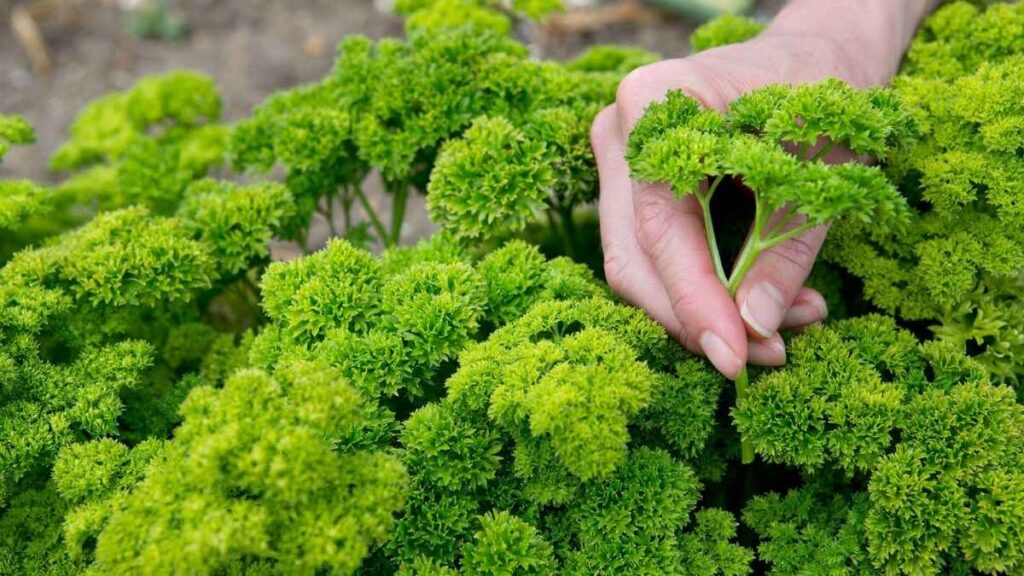
While parsley is often used as a garnish, its bright, fresh flavor is an essential ingredient that should not be overlooked. Its slightly peppery taste can add a burst of freshness to any dish. Parsley works beautifully as a garnish for mashed potatoes, soups, and even turkey. A simple sprinkle over your stuffing or green beans adds a pop of color and flavor that lifts the entire dish.
Parsley also pairs well with heavier sides like creamy casseroles, where its freshness contrasts perfectly with the richness of the dish. It’s a simple yet effective way to brighten up the plate and offer a fresh contrast to the Thanksgiving meal.
How to Grow Parsley:
- Location: Prefers partial shade but can tolerate full sun in cooler climates.
- Soil: Rich, well-draining soil.
- Watering: Keep the soil evenly moist. Parsley prefers regular watering.
- Planting: Sow seeds directly in the ground or start indoors. Space plants about 6–8 inches apart.
- Care: Trim leaves regularly to promote new growth. Parsley is a biennial, so it will go to seed in the second year.
5. Tarragon: An Unexpected Delight
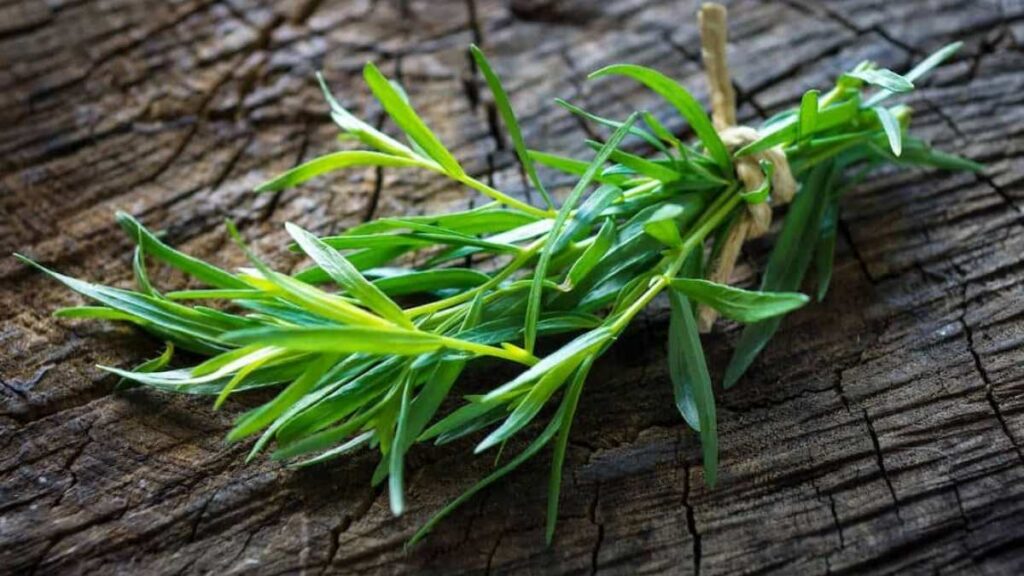
Tarragon might not be the first herb that comes to mind when you think of Thanksgiving, but it has the potential to surprise your guests with its unique flavor. Known for its anise-like taste, tarragon pairs wonderfully with poultry and creamy dishes. Tarragon-infused sauces, such as a tangy tarragon mustard sauce, can bring a sophisticated flair to your turkey.
This herb also works well in dressings or even in a unique cranberry sauce. Tarragon adds a refreshing contrast to the rich flavors of Thanksgiving dishes, and its delicate yet bold flavor can turn an ordinary meal into something extraordinary.
How to Grow Tarragon:
- Location: Full sun for best flavor.
- Soil: Well-drained, slightly sandy soil.
- Watering: Water moderately, but don’t let the soil stay soggy.
- Planting: Plant from cuttings or divisions. Space 12–18 inches apart.
- Care: Tarragon can be grown in pots or in the ground. Prune back in the fall to keep the plant tidy.
6. Bay Leaves: The Silent Enhancer
Bay leaves are often added to dishes where they can slowly release their subtle flavor. Though you remove them before serving, bay leaves enhance the depth of flavor in stocks, gravies, and sauces. Adding bay leaves to your turkey stock or gravy can help round out the flavors, while their delicate fragrance subtly infuses the entire dish.
Bay leaves also work well in cranberry sauce, giving it a slightly herbal note that pairs well with the tartness of the fruit. Though bay leaves don’t take center stage, their presence in your Thanksgiving meal will be felt in the richness of the dishes you create.
How to Grow Bay Leaves:
- Location: Prefers full sun to partial shade.
- Soil: Well-drained, slightly acidic soil.
- Watering: Water regularly, but make sure the soil doesn’t become waterlogged.
- Planting: Bay trees can be grown from seeds or cuttings. They grow slowly, so start with a young plant if possible.
- Care: Prune the tree to maintain shape and size. Protect from frost in colder climates by bringing potted plants indoors during winter.
7. Oregano: A Hint of Mediterranean Flair
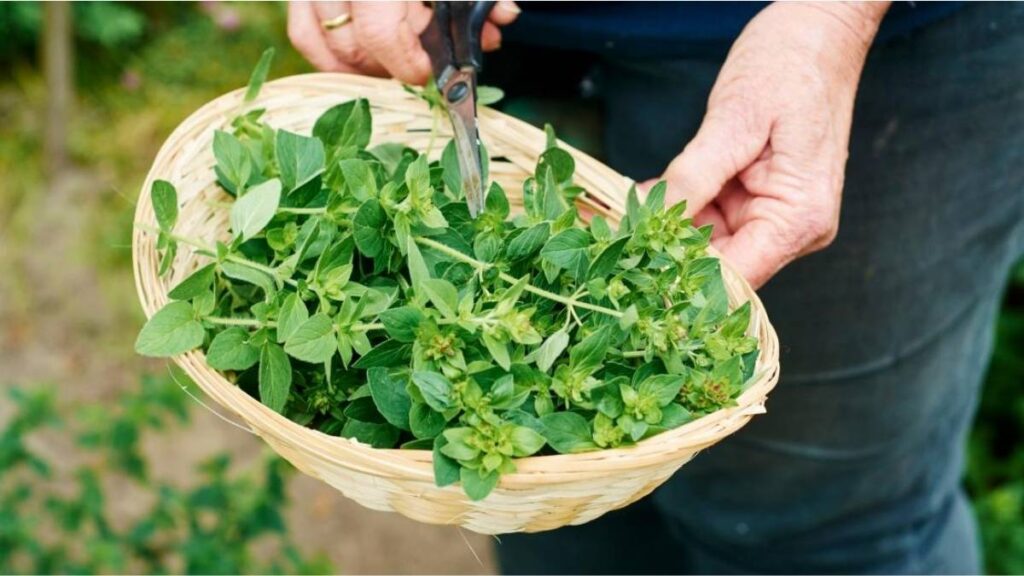
Oregano is a strong herb that brings a bold, peppery flavor to any Thanksgiving spread. Although often used in Italian or Mediterranean cuisine, oregano can add a surprising and delightful twist to your Thanksgiving meal. When combined with other herbs like rosemary and thyme, it makes a flavorful rub for turkey or lamb.
For a Mediterranean-inspired Thanksgiving, try incorporating oregano into your stuffing or roasted vegetable dishes. Its robust flavor balances the richness of turkey and enhances the savory qualities of your sides. Whether fresh or dried, oregano is a must-try herb for your Thanksgiving meal.
How to Grow Oregano:
- Location: Full sun is ideal.
- Soil: Well-drained, slightly alkaline soil.
- Watering: Oregano is drought-tolerant, so let the soil dry out between waterings.
- Planting: Plant from seeds, cuttings, or small plants. Space 12–18 inches apart.
- Care: Trim back regularly to prevent the plant from becoming woody. Oregano can be invasive, so it’s best to plant it in containers or control its spread.
Conclusion
Herbs are essential to creating an unforgettable Thanksgiving feast. Whether it’s the earthy, peppery flavor of sage, the piney aroma of rosemary, or the subtle freshness of parsley, these herbs can elevate any dish from simple to spectacular. By growing your own herbs, you can ensure that your meals are as fresh as they are flavorful. This Thanksgiving, experiment with these herbs, and let their natural flavors shine through in every bite. Your guests will surely appreciate the extra effort and savor the unique flavors you’ve infused into your holiday meal.

